Between the 1930s and 1960s, evolutionary geneticists labored out the fundamental rules of why organisms age. Despite a lot progress in the evolutionary biology of ageing since that point, nevertheless, many puzzles stay. The maybe most basic of these is the query of which organisms ought to exhibit senescence and which shouldn’t (or which ought to age quickly and which shouldn’t). The evolutionary origin of ageing from a non-senescent state has been conceptually framed, for instance, in phrases of the separation between germ-line and soma, the distinction between dad and mom and their offspring, and-in unicellular organisms-the unequal distribution of mobile injury at cell division.
These concepts appear to be carefully associated to the idea of ‘division of labour’ between copy and somatic upkeep. Here, we assessment these ideas and develop a toy mannequin to discover the significance of such asymmetries for the evolution of senescence. We apply our mannequin to the easiest case of a multicellular system: an organism consisting of two totipotent cells. Notably, we discover that in organisms which reproduce symmetrically and partition injury equally, senescence remains to be capable of evolve, opposite to earlier claims.
Our outcomes may need some bearing on understanding the origin of the germ-line-soma separation and the evolution of senescence in multicellular organisms and in colonial species consisting of a number of varieties of people, equivalent to, for instance, eusocial bugs with their completely different castes. This article is a component of the theme problem ‘Ageing and sociality: why, when and how does sociality change ageing patterns?’
We discovered that 300 mL drawn by means of 25-mm cellulose nitrate filters yielded higher than 5 ng/µL DNA at most websites in summer time, which was an approximate threshold for producing robust sequencing libraries in our palms. Using inferred sequence error charges, we binned 12S references for 110 species on a state guidelines into 85 single-species bins and seven multispecies bins. Of 48 bins noticed by seize survey in the St. Regis, we detected eDNA per 40, with a further 4 detections flagged as potential contaminants.
Sixteen unobserved species detected by eDNA ranged from believable to implausible based mostly on distributional information, whereas six noticed species had no 12S reference sequence. Summed log-ratio compositions of eDNA-detected taxa correlated with log(CPUE) (Pearson’s R = 0.655, P < 0.001). Shifts in eDNA composition of a number of taxa and a genotypic shift in channel catfish (Ictalurus punctatus) coincided with the Hogansburg Dam, NY, USA.
In abstract, a easy filtering equipment operated by subject crews with out prior experience gave helpful summaries of eDNA composition with minimal proof of subject contamination. 12S sequencing achieved helpful taxonomic decision regardless of the quick marker size, and information exploration with commonplace bioinformatic instruments clarified taxonomic uncertainty and sources of error.
Bio-Inspired Radio-Frequency Source Localization Based on Cochlear Cross-Correlograms
This paper describes a bio-inspired radio frequency (RF) scene evaluation system based mostly on cross-correlating the outputs of two single-chip RF spectrum analyzers. The latter are applied utilizing digitally-programmable “RF cochlea” chips (in 65 nm CMOS) that combine a transmission-line lively cochlear mannequin, consisting of 50 parallel exponentially-spaced levels for analyzing the radio spectrum from 1.Zero to eight.Three GHz, along with an output encoding community. The encoders convert the analog outputs of all cochlear levels into parallel delta-sigma (Δ-Σ) modulated digital alerts for real-time demodulation and evaluation by a digital back-end processor.
These outputs may also be multiplied with one another to generate cochlear correlation matrices (referred to as cross-correlograms). Simulation outcomes exhibit the use of cross-correlograms for wide-range time-delay estimation and real-time multi-source localization at completely different frequencies and enter signal-to-noise (SNR) ratios. Over-the-air measurement outcomes from an experimental two-channel RF scene evaluation prototype verify the use of such time-delay estimates, that are analogous to interaural time variations (ITDs) in the auditory system, for azimuthal supply localization at 3.four GHz. In addition, variations in acquired sign energy at the two cochleas, that are analogous to interaural degree variations (ILD) in biology, are additionally used to localize RF sources.
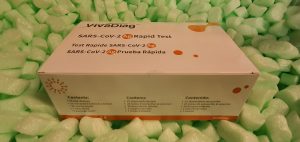
Local genetic context shapes the perform of a gene regulatory community
Gene expression ranges are influenced by a number of coexisting molecular mechanisms. Some of these interactions, equivalent to these of transcription elements and promoters have been studied extensively. However, predicting phenotypes of gene regulatory networks stays a serious problem. Here, we use a well-defined artificial gene regulatory community to check in Escherichia coli how community phenotypes rely upon native genetic context, i.e. the genetic neighborhood of a transcription issue and its relative place.
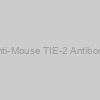 Anti-Mouse TIE-2 Antibody |
|
103-PA111S |
ReliaTech |
100 µg |
EUR 126 |
|
Description: Tie-1/Tie and Tie-2/Tek are receptor tyrosine kinases with unique structural characteristics including two immunoglobulin-like domains flanking three epidermal growth factor (EGF)-like domains, followed by three fibronectin type III-like repeats in the extracellular region, and a split tyrosine kinase domain in the cytoplasmic region. Tie-2 is involved in vascular stabilization and remodeling. Although less well understood, Tie-1 may also act as an ANG receptor, possibly in complex with Tie-2. Human Tie-2 cDNA encodes a 1124 amino acid (aa) residue precursor protein with an 18 residue putative signal peptide, a 727 residue extracellular domain and a 354 residue cytoplasmic domain. Tie-2 is a receptor for the angiopoietin (ANG) family: ANG-1, ANG-2, and ANG-3 (mouse)/-4 (human). Ang-2 has been reported to act as an antagonist for Ang-1. Mice engineered to overexpress Ang-2 or to lack Ang-1 or Tie-2 display similar angiogenesis defects. |
 Anti-Human TIE-2 Antibody |
|
101-M55 |
ReliaTech |
100 µg |
EUR 399 |
|
Description: Tie-1/Tie and Tie-2/Tek are receptor tyrosine kinases with unique structural characteristics including two immunoglobulin-like domains flanking three epidermal growth factor (EGF)-like domains, followed by three fibronectin type III-like repeats in the extracellular region, and a split tyrosine kinase domain in the cytoplasmic region. Tie-2 is involved in vascular stabilization and remodeling. Although less well understood, Tie-1 may also act as an ANG receptor, possibly in complex with Tie-2. Human Tie-2 cDNA encodes a 1124 amino acid (aa) residue precursor protein with an 18 residue putative signal peptide, a 727 residue extracellular domain and a 354 residue cytoplasmic domain. Tie-2 is a receptor for the angiopoietin (ANG) family: ANG-1, ANG-2, and ANG-3 (mouse)/-4 (human). Ang-2 has been reported to act as an antagonist for Ang-1. Mice engineered to overexpress Ang-2 or to lack Ang-1 or Tie-2 display similar angiogenesis defects. |
 Anti-Human TIE-2 Antibody |
|
101-M837 |
ReliaTech |
100 µg |
EUR 399 |
|
Description: Tie-1/Tie and Tie-2/Tek are receptor tyrosine kinases with unique structural characteristics including two immunoglobulin-like domains flanking three epidermal growth factor (EGF)-like domains, followed by three fibronectin type III-like repeats in the extracellular region, and a split tyrosine kinase domain in the cytoplasmic region. Tie-2 is involved in vascular stabilization and remodeling. Although less well understood, Tie-1 may also act as an ANG receptor, possibly in complex with Tie-2. Human Tie-2 cDNA encodes a 1124 amino acid (aa) residue precursor protein with an 18 residue putative signal peptide, a 727 residue extracellular domain and a 354 residue cytoplasmic domain. Tie-2 is a receptor for the angiopoietin (ANG) family: ANG-1, ANG-2, and ANG-3 (mouse)/-4 (human). Ang-2 has been reported to act as an antagonist for Ang-1. Mice engineered to overexpress Ang-2 or to lack Ang-1 or Tie-2 display similar angiogenesis defects. |
 Anti-Human TIE-2 Antibody |
|
102-PA111S |
ReliaTech |
100 µg |
EUR 126 |
|
Description: TIE-1 (tyrosine kinase with Ig and EGF homology domains 1) and TIE-2/TEK comprise a receptor tyrosine kinase (RTK) subfamily with unique structural characteristics: two immunoglobulin-like domains flanking three epidermal growth factor (EGF)-like domains and followed by three fibronectin type III-like repeats in the extracellular region and a split tyrosine kinase domain in the cytoplasmic region. These receptors are expressed primarily on endothelial and hematopoietic progenitor cells and play critical roles in angiogenesis, vasculogenesis and hematopoiesis. Human TIE-2 cDNA encodes a 1124 amino acid (aa) residue precursor protein with an 18 residue putative signal peptide, a 727 residue extracellular domain and a 354 residue cytoplasmic domain. Two ligands, angiopoietin-1 (Ang1) and angiopoietin-2 (Ang2), which bind TIE-2 with high affinity have been identified. Ang2 has been reported to act as an antagonist for Ang1. Mice engineered to overexpress Ang2 or to lack Ang1 or TIE-2 display similar angiogenic defects. |
) PE anti-mouse CD202b (Tie-2, CD202) |
|
E16FMP202b-050U |
EnoGene |
50 μg |
EUR 476.67 |
|
Description: Available in various conjugation types. |
) PE anti-mouse CD202b (Tie-2, CD202) |
|
E16FMP202b-100U |
EnoGene |
100 μg |
EUR 953.33 |
|
Description: Available in various conjugation types. |
) PE anti-mouse CD202b (Tie-2, CD202) |
|
E16FMP202b-200U |
EnoGene |
200 μg |
EUR 1278.33 |
|
Description: Available in various conjugation types. |
) APC anti-mouse CD202b (Tie-2, CD202) |
|
E16FMA202b-025U |
EnoGene |
25 μg |
EUR 325 |
|
Description: Available in various conjugation types. |
) APC anti-mouse CD202b (Tie-2, CD202) |
|
E16FMA202b-100U |
EnoGene |
100 μg |
EUR 953.33 |
|
Description: Available in various conjugation types. |
 Recombinant Mouse TIE-2 Fc Chimera |
|
7-04192 |
CHI Scientific |
1µg |
Ask for price |
 Recombinant Mouse TIE-2 Fc Chimera |
|
7-04193 |
CHI Scientific |
3µg |
Ask for price |
 Recombinant Mouse TIE-2 Fc Chimera |
|
7-04194 |
CHI Scientific |
100µg |
Ask for price |
) Biotin anti-mouse CD202b (Tie-2, CD202) |
|
E16FMB202b-050U |
EnoGene |
50 μg |
EUR 411.67 |
|
Description: Available in various conjugation types. |
) Biotin anti-mouse CD202b (Tie-2, CD202) |
|
E16FMB202b-200U |
EnoGene |
200 μg |
EUR 910 |
|
Description: Available in various conjugation types. |
) Purified anti-mouse CD202b (Tie-2, CD202) |
|
E16FMU202b-050U |
EnoGene |
50 μg |
EUR 325 |
|
Description: Available in various conjugation types. |
) Purified anti-mouse CD202b (Tie-2, CD202) |
|
E16FMU202b-100U |
EnoGene |
100 μg |
EUR 650 |
|
Description: Available in various conjugation types. |
) Purified anti-mouse CD202b (Tie-2, CD202) |
|
E16FMU202b-200U |
EnoGene |
200 μg |
EUR 801.67 |
|
Description: Available in various conjugation types. |
) Purified anti-mouse CD202b (Tie-2, CD202) |
|
E16FMU202b-500U |
EnoGene |
500 μg |
EUR 3250 |
|
Description: Available in various conjugation types. |
 Mouse TIE-2, soluble Recombinant Protein |
|
S01-M43 |
ReliaTech |
10 µg |
EUR 68.25 |
|
Description: Recombinant mouse soluble TIE-2 was fused with a 6x His-tag at the C-terminus. The soluble receptor protein consists of the full extracellular domain (Ala23-Ala737). Mouse sTIE-2 monomer has a calculated molecular mass of approximately 79,86 kDa. As a result of glycosylation, the recombinant protein migrates as an approximately 95 kDa protein in SDS-PAGE under reducing conditions. TIE-1 (tyrosine kinase with Ig and EGF homology domains 1) and TIE-2/Tek comprise a receptor tyrosine kinase (RTK) subfamily with unique structural characteristics: two immunoglobulin-like domains flanking three epidermal growth factor (EGF)-like domains and followed by three fibronectin type III-like repeats in the extracellular region and a split tyrosine kinase domain in the cytoplasmic region. These receptors are expressed primarily on endothelial and hematopoietic progenitor cells and play critical roles in angiogenesis, vasculogenesis and hematopoiesis. |
 Mouse TIE-2, soluble Recombinant Protein |
|
S01-M44 |
ReliaTech |
50 µg |
EUR 189 |
|
Description: Recombinant mouse soluble TIE-2 was fused with a 6x His-tag at the C-terminus. The soluble receptor protein consists of the full extracellular domain (Ala23-Ala737). Mouse sTIE-2 monomer has a calculated molecular mass of approximately 79,86 kDa. As a result of glycosylation, the recombinant protein migrates as an approximately 95 kDa protein in SDS-PAGE under reducing conditions. TIE-1 (tyrosine kinase with Ig and EGF homology domains 1) and TIE-2/Tek comprise a receptor tyrosine kinase (RTK) subfamily with unique structural characteristics: two immunoglobulin-like domains flanking three epidermal growth factor (EGF)-like domains and followed by three fibronectin type III-like repeats in the extracellular region and a split tyrosine kinase domain in the cytoplasmic region. These receptors are expressed primarily on endothelial and hematopoietic progenitor cells and play critical roles in angiogenesis, vasculogenesis and hematopoiesis. |
 Protein) Mouse TIE-1 Fc Chimera (TIE-1 Fc) Protein |
|
abx073608-100tests |
Abbexa |
100 tests |
EUR 225 |
 Protein) Mouse TIE-1 Fc Chimera (TIE-1 Fc) Protein |
|
abx073608-1920tests |
Abbexa |
1920 tests |
EUR 4862.5 |
 Protein) Mouse TIE-1 Fc Chimera (TIE-1 Fc) Protein |
|
abx073608-400tests |
Abbexa |
400 tests |
EUR 325 |
 Anti-Mouse TIE-1 Antibody |
|
103-PA110S |
ReliaTech |
100 µg |
EUR 126 |
|
Description: TIE-1 (tyrosine kinase with Ig and EGF homology domains 1) and TIE-2/Tek comprise a receptor tyrosine kinase (RTK) subfamily with unique structural characteristics: two immunoglobulin-like domains flanking three epidermal growth factor (EGF)-like domains and followed by three fibronectin type III-like repeats in the extracellular region and a split tyrosine kinase domain in the cytoplasmic region. These receptors are expressed primarily on endothelial and hematopoietic progenitor cells and play critical roles in angiogenesis, vasculogenesis and hematopoiesis. |
 Anti-Human TIE-2-PE Antibody |
|
101-M54-PE |
ReliaTech |
50 µg |
Ask for price |
|
Description: Tie-1/Tie and Tie-2/Tek are receptor tyrosine kinases with unique structural characteristics including two immunoglobulin-like domains flanking three epidermal growth factor (EGF)-like domains, followed by three fibronectin type III-like repeats in the extracellular region, and a split tyrosine kinase domain in the cytoplasmic region. Tie-2 is involved in vascular stabilization and remodeling. Although less well understood, Tie-1 may also act as an ANG receptor, possibly in complex with Tie-2. Human Tie-2 cDNA encodes a 1124 amino acid (aa) residue precursor protein with an 18 residue putative signal peptide, a 727 residue extracellular domain and a 354 residue cytoplasmic domain. Tie-2 is a receptor for the angiopoietin (ANG) family: ANG-1, ANG-2, and ANG-3 (mouse)/-4 (human). Ang-2 has been reported to act as an antagonist for Ang-1. Mice engineered to overexpress Ang-2 or to lack Ang-1 or Tie-2 display similar angiogenesis defects. |
 Anti-Human TIE-2-PE Antibody |
|
101-M54S-PE |
ReliaTech |
25 µg |
Ask for price |
|
Description: Tie-1/Tie and Tie-2/Tek are receptor tyrosine kinases with unique structural characteristics including two immunoglobulin-like domains flanking three epidermal growth factor (EGF)-like domains, followed by three fibronectin type III-like repeats in the extracellular region, and a split tyrosine kinase domain in the cytoplasmic region. Tie-2 is involved in vascular stabilization and remodeling. Although less well understood, Tie-1 may also act as an ANG receptor, possibly in complex with Tie-2. Human Tie-2 cDNA encodes a 1124 amino acid (aa) residue precursor protein with an 18 residue putative signal peptide, a 727 residue extracellular domain and a 354 residue cytoplasmic domain. Tie-2 is a receptor for the angiopoietin (ANG) family: ANG-1, ANG-2, and ANG-3 (mouse)/-4 (human). Ang-2 has been reported to act as an antagonist for Ang-1. Mice engineered to overexpress Ang-2 or to lack Ang-1 or Tie-2 display similar angiogenesis defects. |
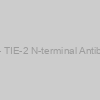 Anti- TIE-2 N-terminal Antibody |
|
GWB-1C40EA |
GenWay Biotech |
0.1 mg |
Ask for price |
|
|
 Tie-2 Antibody |
|
45046-100ul |
SAB |
100ul |
EUR 302.4 |
 Tie-2 Antibody |
|
45046-50ul |
SAB |
50ul |
EUR 224.4 |
 Tie-2 Antibody |
|
E19-7500-1 |
EnoGene |
50ug/50ul |
EUR 145 |
|
Description: Available in various conjugation types. |
 Tie-2 Antibody |
|
E19-7500-2 |
EnoGene |
100ug/100ul |
EUR 225 |
|
Description: Available in various conjugation types. |
 Anti-Human TIE-2-FITC Antibody |
|
101-M54-FITC |
ReliaTech |
50 µg |
Ask for price |
|
Description: Tie-1/Tie and Tie-2/Tek are receptor tyrosine kinases with unique structural characteristics including two immunoglobulin-like domains flanking three epidermal growth factor (EGF)-like domains, followed by three fibronectin type III-like repeats in the extracellular region, and a split tyrosine kinase domain in the cytoplasmic region. Tie-2 is involved in vascular stabilization and remodeling. Although less well understood, Tie-1 may also act as an ANG receptor, possibly in complex with Tie-2. Human Tie-2 cDNA encodes a 1124 amino acid (aa) residue precursor protein with an 18 residue putative signal peptide, a 727 residue extracellular domain and a 354 residue cytoplasmic domain. Tie-2 is a receptor for the angiopoietin (ANG) family: ANG-1, ANG-2, and ANG-3 (mouse)/-4 (human). Ang-2 has been reported to act as an antagonist for Ang-1. Mice engineered to overexpress Ang-2 or to lack Ang-1 or Tie-2 display similar angiogenesis defects. |
 Anti-Human TIE-2-FITC Antibody |
|
101-M54S-FITC |
ReliaTech |
25 µg |
Ask for price |
|
Description: Tie-1/Tie and Tie-2/Tek are receptor tyrosine kinases with unique structural characteristics including two immunoglobulin-like domains flanking three epidermal growth factor (EGF)-like domains, followed by three fibronectin type III-like repeats in the extracellular region, and a split tyrosine kinase domain in the cytoplasmic region. Tie-2 is involved in vascular stabilization and remodeling. Although less well understood, Tie-1 may also act as an ANG receptor, possibly in complex with Tie-2. Human Tie-2 cDNA encodes a 1124 amino acid (aa) residue precursor protein with an 18 residue putative signal peptide, a 727 residue extracellular domain and a 354 residue cytoplasmic domain. Tie-2 is a receptor for the angiopoietin (ANG) family: ANG-1, ANG-2, and ANG-3 (mouse)/-4 (human). Ang-2 has been reported to act as an antagonist for Ang-1. Mice engineered to overexpress Ang-2 or to lack Ang-1 or Tie-2 display similar angiogenesis defects. |
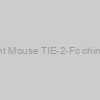 Recombinant Mouse TIE-2-Fc chimeric protein |
|
TIE26-R-100 |
Alpha Diagnostics |
100 ug |
EUR 1074 |
 Recombinant Mouse TIE-2-Fc chimeric protein |
|
TIE26-R-20 |
Alpha Diagnostics |
20 ug |
EUR 343.2 |
 Mouse Anti-Human Tie-1 monoclonal antibody, clone NN19 |
|
CABT-ZB1060 |
Creative Diagnostics |
50 μl |
EUR 456 |
|
|
|
Description: Mouse |
 Mouse Anti-Human Tie-1 monoclonal antibody, clone NN14 |
|
CABT-ZB743 |
Creative Diagnostics |
50 μl |
EUR 456 |
|
|
|
Description: Mouse |
 Antibody) Rat Monoclonal anti-Mouse CD202b (Tie-2, CD202) Antibody |
|
xAP-0575 |
Angio Proteomie |
100ug |
EUR 280 |
 Tie-2 Polyclonal Antibody |
|
ABP56367-003ml |
Abbkine |
0.03ml |
EUR 189.6 |
|
|
|
Description: A polyclonal antibody for detection of Tie-2 from Human, Mouse. This Tie-2 antibody is for IHC-P, ELISA. It is affinity-purified from rabbit antiserum by affinity-chromatography using epitope-specific immunogenand is unconjugated. The antibody is produced in rabbit by using as an immunogen synthesized peptide derived from human Tie-2 around the non-phosphorylation site of Y1102 |
 Tie-2 Polyclonal Antibody |
|
ABP56367-01ml |
Abbkine |
0.1ml |
EUR 346.8 |
|
|
|
Description: A polyclonal antibody for detection of Tie-2 from Human, Mouse. This Tie-2 antibody is for IHC-P, ELISA. It is affinity-purified from rabbit antiserum by affinity-chromatography using epitope-specific immunogenand is unconjugated. The antibody is produced in rabbit by using as an immunogen synthesized peptide derived from human Tie-2 around the non-phosphorylation site of Y1102 |
 Tie-2 Polyclonal Antibody |
|
ABP56367-02ml |
Abbkine |
0.2ml |
EUR 496.8 |
|
|
|
Description: A polyclonal antibody for detection of Tie-2 from Human, Mouse. This Tie-2 antibody is for IHC-P, ELISA. It is affinity-purified from rabbit antiserum by affinity-chromatography using epitope-specific immunogenand is unconjugated. The antibody is produced in rabbit by using as an immunogen synthesized peptide derived from human Tie-2 around the non-phosphorylation site of Y1102 |
 Tie-2 Polyclonal Antibody |
|
ABP56368-003ml |
Abbkine |
0.03ml |
EUR 189.6 |
|
|
|
Description: A polyclonal antibody for detection of Tie-2 from Human, Mouse. This Tie-2 antibody is for WB, ELISA. It is affinity-purified from rabbit antiserum by affinity-chromatography using epitope-specific immunogenand is unconjugated. The antibody is produced in rabbit by using as an immunogen synthesized peptide derived from human Tie-2 around the non-phosphorylation site of Y992 |
 Tie-2 Polyclonal Antibody |
|
ABP56368-01ml |
Abbkine |
0.1ml |
EUR 346.8 |
|
|
|
Description: A polyclonal antibody for detection of Tie-2 from Human, Mouse. This Tie-2 antibody is for WB, ELISA. It is affinity-purified from rabbit antiserum by affinity-chromatography using epitope-specific immunogenand is unconjugated. The antibody is produced in rabbit by using as an immunogen synthesized peptide derived from human Tie-2 around the non-phosphorylation site of Y992 |
 Tie-2 Polyclonal Antibody |
|
ABP56368-02ml |
Abbkine |
0.2ml |
EUR 496.8 |
|
|
|
Description: A polyclonal antibody for detection of Tie-2 from Human, Mouse. This Tie-2 antibody is for WB, ELISA. It is affinity-purified from rabbit antiserum by affinity-chromatography using epitope-specific immunogenand is unconjugated. The antibody is produced in rabbit by using as an immunogen synthesized peptide derived from human Tie-2 around the non-phosphorylation site of Y992 |
 Tie-2 Polyclonal Antibody |
|
E20-74650 |
EnoGene |
100ug |
EUR 225 |
|
Description: Available in various conjugation types. |
 Tie-2 Polyclonal Antibody |
|
E20-74651 |
EnoGene |
100ug |
EUR 225 |
|
Description: Available in various conjugation types. |
 Tie-2 Conjugated Antibody |
|
C45046 |
SAB |
100ul |
EUR 476.4 |
 Tie-2 Polyclonal Antibody |
|
E44H03621 |
EnoGene |
100ul |
EUR 255 |
|
Description: Biotin-Conjugated, FITC-Conjugated , AF350 Conjugated , AF405M-Conjugated ,AF488-Conjugated, AF514-Conjugated ,AF532-Conjugated, AF555-Conjugated ,AF568-Conjugated , HRP-Conjugated, AF405S-Conjugated, AF405L-Conjugated , AF546-Conjugated, AF594-Conjugated , AF610-Conjugated, AF635-Conjugated , AF647-Conjugated , AF680-Conjugated , AF700-Conjugated , AF750-Conjugated , AF790-Conjugated , APC-Conjugated , PE-Conjugated , Cy3-Conjugated , Cy5-Conjugated , Cy5.5-Conjugated , Cy7-Conjugated Antibody |
 Tie-2 Polyclonal Antibody |
|
E44H03622 |
EnoGene |
100ul |
EUR 255 |
|
Description: Biotin-Conjugated, FITC-Conjugated , AF350 Conjugated , AF405M-Conjugated ,AF488-Conjugated, AF514-Conjugated ,AF532-Conjugated, AF555-Conjugated ,AF568-Conjugated , HRP-Conjugated, AF405S-Conjugated, AF405L-Conjugated , AF546-Conjugated, AF594-Conjugated , AF610-Conjugated, AF635-Conjugated , AF647-Conjugated , AF680-Conjugated , AF700-Conjugated , AF750-Conjugated , AF790-Conjugated , APC-Conjugated , PE-Conjugated , Cy3-Conjugated , Cy5-Conjugated , Cy5.5-Conjugated , Cy7-Conjugated Antibody |
 Protein) Human TIE-2 Fc Chimera (TIE-2 Fc) Protein |
|
abx073609-100tests |
Abbexa |
100 tests |
EUR 225 |
 Protein) Human TIE-2 Fc Chimera (TIE-2 Fc) Protein |
|
abx073609-1920tests |
Abbexa |
1920 tests |
EUR 4862.5 |
 Protein) Human TIE-2 Fc Chimera (TIE-2 Fc) Protein |
|
abx073609-400tests |
Abbexa |
400 tests |
EUR 325 |
 Recombinant Mouse TIE-1 Fc Chimera |
|
7-04186 |
CHI Scientific |
1µg |
Ask for price |
 Recombinant Mouse TIE-1 Fc Chimera |
|
7-04187 |
CHI Scientific |
3µg |
Ask for price |
 Recombinant Mouse TIE-1 Fc Chimera |
|
7-04188 |
CHI Scientific |
100µg |
Ask for price |
 Anti-Human TIE-1 Antibody |
|
101-M47 |
ReliaTech |
100 µg |
EUR 399 |
|
Description: Tie-1/Tie and Tie-2/Tek are receptor tyrosine kinases with unique structural characteristics including two immunoglobulin-like domains flanking three epidermal growth factor (EGF)-like domains, followed by three fibronectin type III-like repeats in the extracellular region, and a split tyrosine kinase domain in the cytoplasmic region. Tie-2 is a receptor for the angiopoietin (ANG) family: ANG-1, ANG-2, and ANG-3 (mouse)/-4 (human). It is involved in vascular stabilization and remodeling. Although less well understood, Tie-1 may also act as an ANG receptor, possibly in complex with Tie-2. |
 Mouse TIE-1, soluble Recombinant Protein |
|
S01-M41 |
ReliaTech |
10 µg |
EUR 68.25 |
|
Description: Recombinant mouse soluble TIE-1 was fused with a 6x His-tag at the C-terminus. The soluble receptor protein consists of the full extracellular domain (Ser22-Ala748). Mouse sTIE-1 monomer has a calculated molecular mass of approximately 79,8 kDa. As a result of glycosylation, the recombinant protein migrates as an approximately 95 kDa protein in SDS-PAGE under reducing conditions. TIE-1 (tyrosine kinase with Ig and EGF homology domains 1) and TIE-2/Tek comprise a receptor tyrosine kinase (RTK) subfamily with unique structural characteristics: two immunoglobulin-like domains flanking three epidermal growth factor (EGF)-like domains and followed by three fibronectin type III-like repeats in the extracellular region and a split tyrosine kinase domain in the cytoplasmic region. These receptors are expressed primarily on endothelial and hematopoietic progenitor cells and play critical roles in angiogenesis, vasculogenesis and hematopoiesis. |
 Mouse TIE-1, soluble Recombinant Protein |
|
S01-M42 |
ReliaTech |
50 µg |
EUR 189 |
|
Description: Recombinant mouse soluble TIE-1 was fused with a 6x His-tag at the C-terminus. The soluble receptor protein consists of the full extracellular domain (Ser22-Ala748). Mouse sTIE-1 monomer has a calculated molecular mass of approximately 79,8 kDa. As a result of glycosylation, the recombinant protein migrates as an approximately 95 kDa protein in SDS-PAGE under reducing conditions. TIE-1 (tyrosine kinase with Ig and EGF homology domains 1) and TIE-2/Tek comprise a receptor tyrosine kinase (RTK) subfamily with unique structural characteristics: two immunoglobulin-like domains flanking three epidermal growth factor (EGF)-like domains and followed by three fibronectin type III-like repeats in the extracellular region and a split tyrosine kinase domain in the cytoplasmic region. These receptors are expressed primarily on endothelial and hematopoietic progenitor cells and play critical roles in angiogenesis, vasculogenesis and hematopoiesis. |
 recombinant control protein for WB) Purified Mouse TIE-2 (1-744aa) recombinant control protein for WB |
|
TIE24-C |
Alpha Diagnostics |
100 ul |
EUR 343.2 |
 Tie-2 Rabbit Polyclonal Antibody |
|
ES7366-100ul |
ELK Biotech |
100ul |
EUR 124 |
|
|
|
Description: A Rabbit Polyclonal antibody against Tie-2 from Human/Mouse. This antibody is tested and validated for IHC, WB, ELISA, WB, ELISA |
 Tie-2 Rabbit Polyclonal Antibody |
|
ES7366-50ul |
ELK Biotech |
50ul |
EUR 74 |
|
|
|
Description: A Rabbit Polyclonal antibody against Tie-2 from Human/Mouse. This antibody is tested and validated for IHC, WB, ELISA, WB, ELISA |
 Tie-2 Rabbit Polyclonal Antibody |
|
ES7367-100ul |
ELK Biotech |
100ul |
EUR 124 |
|
|
|
Description: A Rabbit Polyclonal antibody against Tie-2 from Human/Mouse. This antibody is tested and validated for WB, ELISA, WB, ELISA |
 Tie-2 Rabbit Polyclonal Antibody |
|
ES7367-50ul |
ELK Biotech |
50ul |
EUR 74 |
|
|
|
Description: A Rabbit Polyclonal antibody against Tie-2 from Human/Mouse. This antibody is tested and validated for WB, ELISA, WB, ELISA |
 Anti-Tie-2 antibody |
|
STJ96015 |
St John's Laboratory |
200 µl |
EUR 236.4 |
|
Description: Rabbit polyclonal to Tie-2. |
 Anti-Tie-2 antibody |
|
STJ96016 |
St John's Laboratory |
200 µl |
EUR 236.4 |
|
Description: Rabbit polyclonal to Tie-2. |
 Tie-2 Blocking Peptide |
|
DF7500-BP |
Affbiotech |
1mg |
EUR 234 |
 Monoclonal Anti-human TIE-2 IgG # 3, aff pure |
|
TIE23-M |
Alpha Diagnostics |
100 ug |
EUR 578.4 |
 TIE Antibody |
|
47997 |
SAB |
100ul |
EUR 429 |
 Mouse TIE-1 Fc Chimera) Recombinant (CHO cells) Mouse TIE-1 Fc Chimera |
|
RP-704 |
Alpha Diagnostics |
10 ug |
EUR 343.2 |
 TIE-1 Antibody |
|
47997-100ul |
SAB |
100ul |
EUR 399.6 |
 TIE-1 Antibody |
|
47997-50ul |
SAB |
50ul |
EUR 286.8 |
 TIE-1 Antibody |
|
E80804-11 |
EnoGene |
100μl |
EUR 225 |
|
Description: Available in various conjugation types. |
 TIE-1 Antibody |
|
E80805-2 |
EnoGene |
100ul 0.5mg/ml |
EUR 225 |
|
Description: Available in various conjugation types. |
 Polyclonal Antibody) Tie-2 (phospho Tyr992) Polyclonal Antibody |
|
ABP53387-003ml |
Abbkine |
0.03ml |
EUR 189.6 |
|
|
|
Description: A polyclonal antibody for detection of Tie-2 phospho Tyr992) from Human, Mouse. This Tie-2 phospho Tyr992) antibody is for WB, ELISA. It is affinity-purified from rabbit antiserum by affinity-chromatography using epitope-specific immunogenand is unconjugated. The antibody is produced in rabbit by using as an immunogen synthesized peptide derived from human Tie-2 around the phosphorylation site of Y992 |
 Polyclonal Antibody) Tie-2 (phospho Tyr992) Polyclonal Antibody |
|
ABP53387-01ml |
Abbkine |
0.1ml |
EUR 346.8 |
|
|
|
Description: A polyclonal antibody for detection of Tie-2 phospho Tyr992) from Human, Mouse. This Tie-2 phospho Tyr992) antibody is for WB, ELISA. It is affinity-purified from rabbit antiserum by affinity-chromatography using epitope-specific immunogenand is unconjugated. The antibody is produced in rabbit by using as an immunogen synthesized peptide derived from human Tie-2 around the phosphorylation site of Y992 |
 Polyclonal Antibody) Tie-2 (phospho Tyr992) Polyclonal Antibody |
|
ABP53387-02ml |
Abbkine |
0.2ml |
EUR 496.8 |
|
|
|
Description: A polyclonal antibody for detection of Tie-2 phospho Tyr992) from Human, Mouse. This Tie-2 phospho Tyr992) antibody is for WB, ELISA. It is affinity-purified from rabbit antiserum by affinity-chromatography using epitope-specific immunogenand is unconjugated. The antibody is produced in rabbit by using as an immunogen synthesized peptide derived from human Tie-2 around the phosphorylation site of Y992 |
 Polyclonal Antibody) Tie-2 (phospho Tyr992) Polyclonal Antibody |
|
E20-60437 |
EnoGene |
100ug |
EUR 225 |
|
Description: Available in various conjugation types. |
 Polyclonal Antibody) Tie-2 (phospho Tyr992) Polyclonal Antibody |
|
E44H00978 |
EnoGene |
100ul |
EUR 255 |
|
Description: Biotin-Conjugated, FITC-Conjugated , AF350 Conjugated , AF405M-Conjugated ,AF488-Conjugated, AF514-Conjugated ,AF532-Conjugated, AF555-Conjugated ,AF568-Conjugated , HRP-Conjugated, AF405S-Conjugated, AF405L-Conjugated , AF546-Conjugated, AF594-Conjugated , AF610-Conjugated, AF635-Conjugated , AF647-Conjugated , AF680-Conjugated , AF700-Conjugated , AF750-Conjugated , AF790-Conjugated , APC-Conjugated , PE-Conjugated , Cy3-Conjugated , Cy5-Conjugated , Cy5.5-Conjugated , Cy7-Conjugated Antibody |
 Polyclonal Antibody) Tie-2 (phospho Tyr1108) Polyclonal Antibody |
|
ABP56365-003ml |
Abbkine |
0.03ml |
EUR 189.6 |
|
|
|
Description: A polyclonal antibody for detection of Tie-2 phospho Tyr1108) from Human, Mouse. This Tie-2 phospho Tyr1108) antibody is for WB, IF, ELISA. It is affinity-purified from rabbit antiserum by affinity-chromatography using epitope-specific immunogenand is unconjugated. The antibody is produced in rabbit by using as an immunogen synthesized peptide derived from human Tie-2 around the phosphorylation site of Y1108 |
 Polyclonal Antibody) Tie-2 (phospho Tyr1108) Polyclonal Antibody |
|
ABP56365-01ml |
Abbkine |
0.1ml |
EUR 346.8 |
|
|
|
Description: A polyclonal antibody for detection of Tie-2 phospho Tyr1108) from Human, Mouse. This Tie-2 phospho Tyr1108) antibody is for WB, IF, ELISA. It is affinity-purified from rabbit antiserum by affinity-chromatography using epitope-specific immunogenand is unconjugated. The antibody is produced in rabbit by using as an immunogen synthesized peptide derived from human Tie-2 around the phosphorylation site of Y1108 |
 Polyclonal Antibody) Tie-2 (phospho Tyr1108) Polyclonal Antibody |
|
ABP56365-02ml |
Abbkine |
0.2ml |
EUR 496.8 |
|
|
|
Description: A polyclonal antibody for detection of Tie-2 phospho Tyr1108) from Human, Mouse. This Tie-2 phospho Tyr1108) antibody is for WB, IF, ELISA. It is affinity-purified from rabbit antiserum by affinity-chromatography using epitope-specific immunogenand is unconjugated. The antibody is produced in rabbit by using as an immunogen synthesized peptide derived from human Tie-2 around the phosphorylation site of Y1108 |
 Polyclonal Antibody) Tie-2 (phospho Tyr1102) Polyclonal Antibody |
|
ABP56366-003ml |
Abbkine |
0.03ml |
EUR 189.6 |
|
|
|
Description: A polyclonal antibody for detection of Tie-2 phospho Tyr1102) from Human, Mouse. This Tie-2 phospho Tyr1102) antibody is for IHC-P, ELISA. It is affinity-purified from rabbit antiserum by affinity-chromatography using epitope-specific immunogenand is unconjugated. The antibody is produced in rabbit by using as an immunogen synthesized peptide derived from human Tie-2 around the phosphorylation site of Y1102 |
 Polyclonal Antibody) Tie-2 (phospho Tyr1102) Polyclonal Antibody |
|
ABP56366-01ml |
Abbkine |
0.1ml |
EUR 346.8 |
|
|
|
Description: A polyclonal antibody for detection of Tie-2 phospho Tyr1102) from Human, Mouse. This Tie-2 phospho Tyr1102) antibody is for IHC-P, ELISA. It is affinity-purified from rabbit antiserum by affinity-chromatography using epitope-specific immunogenand is unconjugated. The antibody is produced in rabbit by using as an immunogen synthesized peptide derived from human Tie-2 around the phosphorylation site of Y1102 |
 Polyclonal Antibody) Tie-2 (phospho Tyr1102) Polyclonal Antibody |
|
ABP56366-02ml |
Abbkine |
0.2ml |
EUR 496.8 |
|
|
|
Description: A polyclonal antibody for detection of Tie-2 phospho Tyr1102) from Human, Mouse. This Tie-2 phospho Tyr1102) antibody is for IHC-P, ELISA. It is affinity-purified from rabbit antiserum by affinity-chromatography using epitope-specific immunogenand is unconjugated. The antibody is produced in rabbit by using as an immunogen synthesized peptide derived from human Tie-2 around the phosphorylation site of Y1102 |
 Polyclonal Antibody) Tie-2 (phospho Tyr1108) Polyclonal Antibody |
|
13477 |
SAB |
100ul |
EUR 319 |
 Polyclonal Antibody) Tie-2 (phospho Tyr1102) Polyclonal Antibody |
|
13478 |
SAB |
100ul |
EUR 319 |
 Polyclonal Antibody) Tie-2 (phospho Tyr1108) Polyclonal Antibody |
|
E20-60533 |
EnoGene |
100ug |
EUR 225 |
|
Description: Available in various conjugation types. |
 Polyclonal Antibody) Tie-2 (phospho Tyr1102) Polyclonal Antibody |
|
E20-60976 |
EnoGene |
100ug |
EUR 225 |
|
Description: Available in various conjugation types. |
 Polyclonal Antibody) Tie-2 (phospho Tyr1108) Polyclonal Antibody |
|
E013477 |
EnoGene |
100μg/100μl |
EUR 255 |
|
Description: Available in various conjugation types. |
 Polyclonal Antibody) Tie-2 (phospho Tyr1102) Polyclonal Antibody |
|
E013478 |
EnoGene |
100μg/100μl |
EUR 255 |
|
Description: Available in various conjugation types. |
 polyclonal antibody) Tie-2 (phospho-Y1108) polyclonal antibody |
|
E43S4545 |
EnoGene |
100ul |
EUR 225 |
|
Description: Available in various conjugation types. |
 Polyclonal Antibody) Tie-2 (phospho Tyr1108) Polyclonal Antibody |
|
E44H01063 |
EnoGene |
100ul |
EUR 255 |
|
Description: Biotin-Conjugated, FITC-Conjugated , AF350 Conjugated , AF405M-Conjugated ,AF488-Conjugated, AF514-Conjugated ,AF532-Conjugated, AF555-Conjugated ,AF568-Conjugated , HRP-Conjugated, AF405S-Conjugated, AF405L-Conjugated , AF546-Conjugated, AF594-Conjugated , AF610-Conjugated, AF635-Conjugated , AF647-Conjugated , AF680-Conjugated , AF700-Conjugated , AF750-Conjugated , AF790-Conjugated , APC-Conjugated , PE-Conjugated , Cy3-Conjugated , Cy5-Conjugated , Cy5.5-Conjugated , Cy7-Conjugated Antibody |
 Polyclonal Antibody) Tie-2 (phospho Tyr1102) Polyclonal Antibody |
|
E44H01426 |
EnoGene |
100ul |
EUR 255 |
|
Description: Biotin-Conjugated, FITC-Conjugated , AF350 Conjugated , AF405M-Conjugated ,AF488-Conjugated, AF514-Conjugated ,AF532-Conjugated, AF555-Conjugated ,AF568-Conjugated , HRP-Conjugated, AF405S-Conjugated, AF405L-Conjugated , AF546-Conjugated, AF594-Conjugated , AF610-Conjugated, AF635-Conjugated , AF647-Conjugated , AF680-Conjugated , AF700-Conjugated , AF750-Conjugated , AF790-Conjugated , APC-Conjugated , PE-Conjugated , Cy3-Conjugated , Cy5-Conjugated , Cy5.5-Conjugated , Cy7-Conjugated Antibody |
 Human Tie-2 ELISA KIT |
|
E42EH-133 |
EnoGene |
96T/48T |
Ask for price |
 Human Tie-2 ELISA Kit |
|
GWB-SKR257 |
GenWay Biotech |
96 Tests |
Ask for price |
 TIE-2/CD202b Fc Chimera |
|
PR27152 |
Neuromics |
2 ug |
EUR 229.2 |
 TIE-2/CD202b Fc Chimera |
|
PR27152-B |
Neuromics |
each |
EUR 184.5 |
 Protein) Mouse Tyrosine-Protein Kinase Receptor Tie-1 (TIE1) Protein |
|
abx166239-100g |
Abbexa |
100 µg |
EUR 612.5 |
 Protein) Mouse Tyrosine-Protein Kinase Receptor Tie-1 (TIE1) Protein |
|
abx166239-10g |
Abbexa |
10 µg |
EUR 237.5 |
 Protein) Mouse Tyrosine-Protein Kinase Receptor Tie-1 (TIE1) Protein |
|
abx166239-50g |
Abbexa |
50 µg |
EUR 425 |
 TIE-2/VEGFR-2 kinase-IN-2 |
|
T40581-10mg |
TargetMol Chemicals |
10mg |
Ask for price |
|
|
|
Description: TIE-2/VEGFR-2 kinase-IN-2 |
 TIE-2/VEGFR-2 kinase-IN-2 |
|
T40581-1g |
TargetMol Chemicals |
1g |
Ask for price |
|
|
|
Description: TIE-2/VEGFR-2 kinase-IN-2 |
 TIE-2/VEGFR-2 kinase-IN-2 |
|
T40581-1mg |
TargetMol Chemicals |
1mg |
Ask for price |
|
|
|
Description: TIE-2/VEGFR-2 kinase-IN-2 |
 TIE-2/VEGFR-2 kinase-IN-2 |
|
T40581-50mg |
TargetMol Chemicals |
50mg |
Ask for price |
|
|
|
Description: TIE-2/VEGFR-2 kinase-IN-2 |
 TIE-2/VEGFR-2 kinase-IN-2 |
|
T40581-5mg |
TargetMol Chemicals |
5mg |
Ask for price |
|
|
|
Description: TIE-2/VEGFR-2 kinase-IN-2 |
 Mouse Tie1/ Tyrosine-protein kinase receptor Tie-1 ELISA Kit |
|
E1470Mo |
Sunlong |
1 Kit |
EUR 543 |
|
|
|
Description: Tie,Tie-1 |
 ELISA Kit) Mouse Tie1(Tyrosine-protein kinase receptor Tie-1) ELISA Kit |
|
EKF58451-48T |
Biomatik Corporation |
48T |
EUR 396.9 |
 ELISA Kit) Mouse Tie1(Tyrosine-protein kinase receptor Tie-1) ELISA Kit |
|
EKF58451-5x96T |
Biomatik Corporation |
5x96T |
EUR 2693.25 |
 ELISA Kit) Mouse Tie1(Tyrosine-protein kinase receptor Tie-1) ELISA Kit |
|
EKF58451-96T |
Biomatik Corporation |
96T |
EUR 567 |
 ELISA Kit) Mouse Tie1(Tyrosine-protein kinase receptor Tie-1) ELISA Kit |
|
EM0304 |
FN Test |
96T |
EUR 628.92 |
|
|
|
Description: Method of detection: Double Antibody, Sandwich ELISA;Reacts with: Mus ;Sensitivity: 0.094 ng/ml |
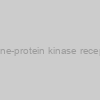 Mouse Tie1 / Tyrosine-protein kinase receptor Tie-1 ELISA Kit |
|
E0125m |
EIAab |
96T |
EUR 776 |
 Human, Mouse) Phospho-Tie-2 (Tyr992) Human, Mouse |
|
pAP-0002 |
Angio Proteomie |
50ul |
EUR 326.4 |
 ELISA Kit) Mouse Tyrosine-Protein Kinase Receptor Tie-1 (TIE1) ELISA Kit |
|
abx254664-96tests |
Abbexa |
96 tests |
EUR 848.4 |
|
|
 ELISA Kit) Mouse Tyrosine-Protein Kinase Receptor Tie-1 (TIE1) ELISA Kit |
|
abx573285-96tests |
Abbexa |
96 tests |
EUR 848.4 |
|
|
 ELISA Kit) Mouse Tyrosine-Protein Kinase Receptor Tie-1 (TIE1) ELISA Kit |
|
20-abx154761 |
Abbexa |
-
Ask for price
-
Ask for price
-
Ask for price
|
- 10 × 96 tests
- 5 × 96 tests
- 96 tests
|
|
|
 TIE-2/VEGFR-2 kinase-IN-1 |
|
T8817-10mg |
TargetMol Chemicals |
10mg |
Ask for price |
|
|
|
Description: TIE-2/VEGFR-2 kinase-IN-1 |
 TIE-2/VEGFR-2 kinase-IN-1 |
|
T8817-1g |
TargetMol Chemicals |
1g |
Ask for price |
|
|
|
Description: TIE-2/VEGFR-2 kinase-IN-1 |
 TIE-2/VEGFR-2 kinase-IN-1 |
|
T8817-1mg |
TargetMol Chemicals |
1mg |
Ask for price |
|
|
|
Description: TIE-2/VEGFR-2 kinase-IN-1 |
 TIE-2/VEGFR-2 kinase-IN-1 |
|
T8817-50mg |
TargetMol Chemicals |
50mg |
Ask for price |
|
|
|
Description: TIE-2/VEGFR-2 kinase-IN-1 |
 TIE-2/VEGFR-2 kinase-IN-1 |
|
T8817-5mg |
TargetMol Chemicals |
5mg |
Ask for price |
|
|
|
Description: TIE-2/VEGFR-2 kinase-IN-1 |
 Rabbit Polyclonal Antibody) Tie-2 (phospho Tyr992) Rabbit Polyclonal Antibody |
|
ES4386-100ul |
ELK Biotech |
100ul |
EUR 124 |
|
|
|
Description: A Rabbit Polyclonal antibody against Tie-2 (phospho Tyr992) from Human/Mouse. This antibody is tested and validated for WB, ELISA, WB, ELISA |
We present that one gene regulatory community with fastened topology can show not solely quantitatively but additionally qualitatively completely different phenotypes, relying solely on the native genetic context of its parts. Transcriptional read-through is the primary molecular mechanism that locations one transcriptional unit inside two separate regulons with out the want for complicated regulatory sequences. We suggest that relative order of particular person transcriptional items, with its potential for combinatorial complexity, performs an vital position in shaping phenotypes of gene regulatory networks.

